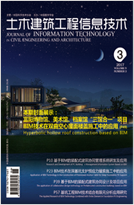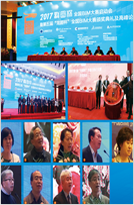2021, 13(4): 6-12. doi: 10.16670/j.cnki.cn11-5823/tu.2021.04.02
国产BIM建模软件发展的思考:基于PCA的影响因素研究
华中科技大学 土木与水利工程学院,武汉 430074 |
Reflection on the Development of Domestic BIM Modeling Software: A Study on the Influence Factors Based on PCA
School of Civil and Hydraulic Engineering, Huazhong University of Science and Technology, Wuhan 430074, China |
引用本文:
陈珂, 陈强健, 杜鹏. 国产BIM建模软件发展的思考:基于PCA的影响因素研究[J]. 土木建筑工程信息技术,
2021, 13(4): 6-12.
doi: 10.16670/j.cnki.cn11-5823/tu.2021.04.02

Citation:
Ke Chen, Qiangjian Chen, Peng Du. Reflection on the Development of Domestic BIM Modeling Software: A Study on the Influence Factors Based on PCA[J]. Journal of Information Technologyin Civil Engineering and Architecture,
2021, 13(4): 6-12.
doi: 10.16670/j.cnki.cn11-5823/tu.2021.04.02

摘要:随着各行业向数字化、网络化和智能化方向发展,基础核心软件的战略意义不断提升。在工程建造领域,BIM建模软件是实现智能建造的重要支撑。但是,当前国产BIM建模软件核心技术受制于人,面临严重的“卡脖子”风险。为促进国产BIM建模软件发展,本研究从政策环境、市场环境、研发经营和核心技术四个维度识别出28个国产BIM建模软件发展的影响因素,通过问卷形式开展因素影响程度的评定调查,并利用主成分分析法提取影响国产BIM建模软件发展的关键因素。最后,本研究通过与行业专家的多轮深度访谈,对关键影响因素进行解读,为发展我国自主可控的BIM建模软件提供路径规划方向。
Abstract: With almost every industry move towards digitization, networking, and intelligentization, the strategic significance of basic software is constantly enhanced. In the construction industry, BIM software is a key support to realize smart construction. However, at present, the core technology of domestic BIM modeling software is restrained by other countries. To promote the development of the domestic BIM modeling software, this study identified 28 domestic influence factors of BIM modeling software development from policy environment, market environment, R&D management, and core technology dimensions. Then, it carried out a questionnaire survey to collect the impact degree of these factors and applied the principal component analysis (PCA) to identify the key factors affecting the development of domestic BIM modeling software. Finally, this study interpreted the key factors through multiple rounds of in-depth interviews with industry experts and suggested the development directions for the domestic BIM modeling software.
| [1] |
廖玉平. 加快建筑业转型, 推动高质量发展——解读《关于推动智能建造与建筑工业化协同发展的指导意见》[J]. 中国勘察设计, 2020(9): 20-21. |
| [2] |
何关培. BIM和BIM相关软件[J]. 土木建筑工程信息技术, 2010, 2(4): 110-117.doi: 10.3969/j.issn.1674-7461.2010.04.020 |
| [3] |
王美华, 高路, 侯羽中, 等. 国内主流BIM软件特性的应用与比较分析[J]. 土木建筑工程信息技术, 2017, 9(1): 69-75. |
| [4] |
Jongsung Won, Ghang Lee. How to tell if a BIM project is successful: A goal-driven approach[J]. Automation in Construction, 2016, 69. |
| [5] |
Lonny Simonian, Thomas Korman. Legal considerations in the United States associated with building information modeling[J]. COBRA 2010 CIB W113 Law & Dispute Resolution, 2010. |
| [6] |
黄亚江, 刘英音, 刘尔列, 等. 基于FAHP的BIM软件供应商选择评价研究[J]. 数学的实践与认识, 2018, 48(24): 51-58. |
| [7] |
江勇. 发展自主工业软件促进制造业高端化发展的思考与建议[J]. 软件产业与工程, 2011(1): 19-20, 34. |
| [8] | |
| [9] |
谭章禄, 陈晓. 我国软件产业国产化发展战略研究[J]. 技术经济与管理研究, 2016(8): 104-108.doi: 10.3969/j.issn.1004-292X.2016.08.019 |
| [10] |
Mikkonen T, Lassenius C, Männistö T, et al. Continuous and collaborative technology transfer: Software engineering research with real-time industry impact[J]. Information and Software Technology, 2018(95): 34-45. |
| [11] |
Gao L S, Iyer B. Value creation using alliances within the software industry[J]. Electronic commerce research and applications, 2009, 8(6): 280-290.doi: 10.1016/j.elerap.2009.04.009 |
| [12] |
ISO/IEC 25010-Software Product Quality, 2011. |
| [13] | |
| [14] | |
| [15] |
惠宁, 葛鹏飞. 产业规模、R&D投入与软件产业发展的关联度[J]. 改革, 2015, 6: 100-109. |
| [16] |
Moore R. Standardisation: A tool for addressing market failure within the software industry[J]. Computer Law & Security Review, 2013, 29(4): 413-429. |
| [17] | |
| [18] |
何波. BIM软件与BIM应用环境和方法研究[J]. 土木建筑工程信息技术, 2013, 5(5): 1-10.doi: 10.3969/j.issn.1674-7461.2013.05.001 |
| [19] | |
| [20] |
黄琢华. 基于BIM的分布式协同设计平台底层框架研究[J]. 土木建筑工程信息技术, 2014, 6(1): 67-70.doi: 10.3969/j.issn.1674-7461.2014.01.012 |
| [21] |
Salman Azhar, Malik Khalfan, Tayyab Maqsood. Building information modelling(BIM): now and beyond[J]. Australasian Journal of Construction Economics and Building, 2012, 12(4) |
| [22] |
徐恒, 吴丽琳. 工业软件企业发展及对策建议——基于研发设计类软件开发[J]. 工业技术创新, 2019, 6(1): 99-102+106. |
| [23] |
Trendowicz A, Münch J. Factors influencing software development productivity-state-of-the-art and industrial experiences[J]. Advances in Computers, 2009, 77: 185-241. |
| [24] |
Enríquez J G, Sánchez-Begínes J M, Domínguez-Mayo F J, et al. An approach to characterize and evaluate the quality of Product Lifecycle Management Software Systems[J]. Computer Standards & Interfaces, 2019, 61: 77-88. |
| [25] |
Carrozza G, Pietrantuono R, Russo S. A software quality framework for large-scale mission-critical systems engineering[J]. Information and Software Technology, 2018, 102: 100-116.doi: 10.1016/j.infsof.2018.05.009 |
| [26] |
陈若愚, 林磊, 胡忠宇. 基于成熟度的开源软件立项评估方法[J]. 计算机系统应用, 2018, 27(9): 278-282. |
| [27] |
Supriyo D E, Dutta D. Impact of Intangible Capital on Productivity and Growth: Lessons from the Indian Information Technology Software Industry[J]. Economic Record, 2007, 83. |
| [28] | |
| [29] | |
| [30] |
谭亚芳, 刘娟, 王才华, 等. 一种稀疏可控的主成分分析方法[J]. 计算机科学, 2017, 44(1): 243-246+282. |
| [31] |
杨振宏, 赵双静, 张梦洁, 等. 建筑工人安全意识影响因素的主成分分析[J]. 安全与环境学报, 2020, 20(1): 163-168. |
| [32] |
桑培东, 王延杰. 装配式住宅发展的制约因素研究——基于主成分分析法[J]. 工程管理学报, 2018, 32(6): 23-28. |
计量
- PDF下载量(41)
- 文章访问量(2615)
- HTML全文浏览量(1318)















